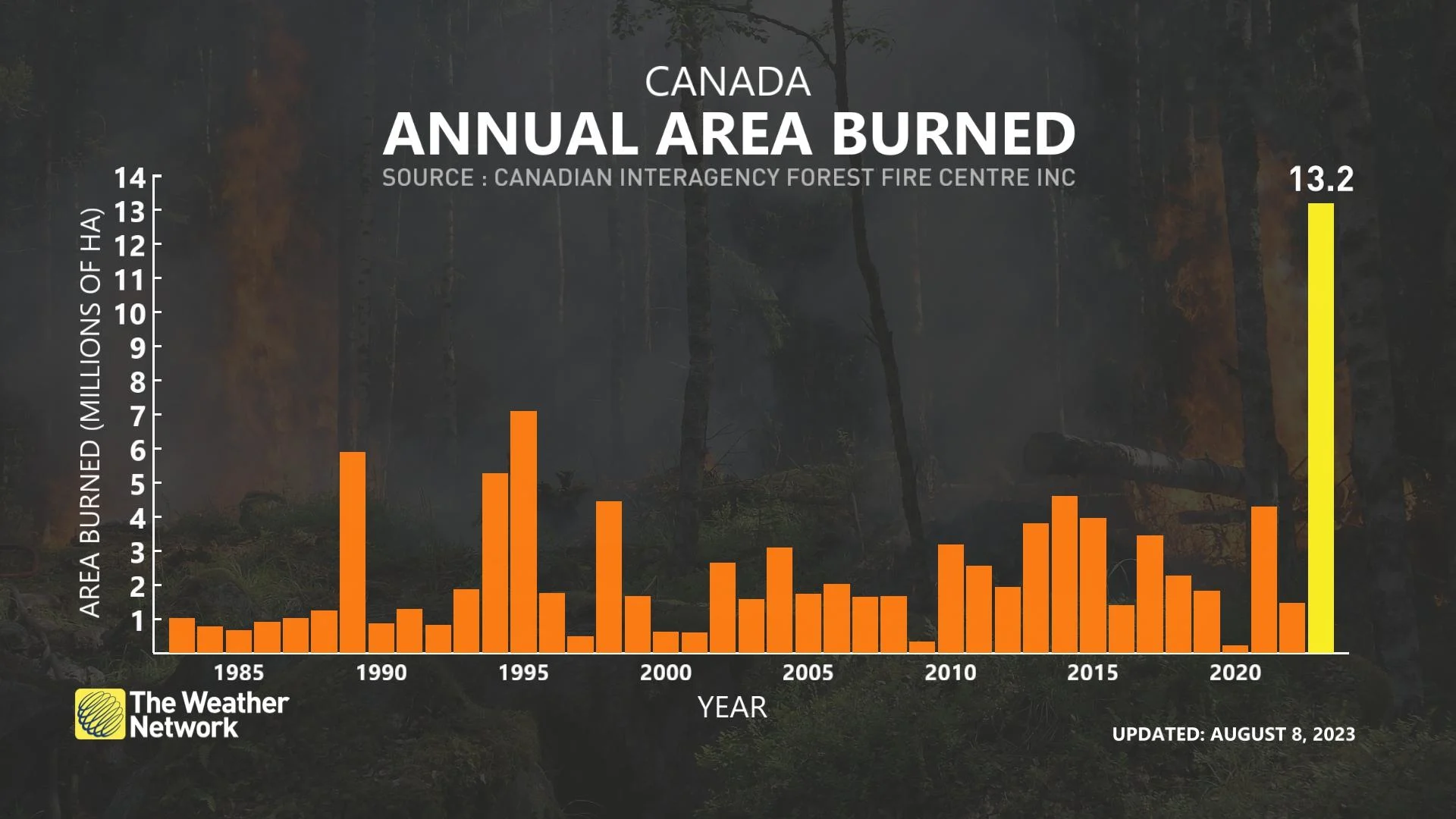
Canada’s historic wildfire season only halfway done: A checkpoint
We’re only halfway through the 2023 wildfire season, so let’s take a brief look at it so far.
Visit The Weather Network's wildfire hub to keep up with the latest on the active wildfire season across Canada.
We’re now halfway through Canada’s wildfire season – the worst the country has experienced to date. 13.2 million hectares of forested land have already burned; a scary number for being only halfway through the season. That is more land burned than the surface area of Newfoundland.
British Columbia has no doubt battled the most wildfires this year, with more than 1,700 fires burned so far and more than 400 fires currently burning. Unfortunately, the weather is showing signs that it will continue to work against the drought and fire-stricken province next week.

So far this year, high-pressure ridges have been staying stateside, causing a brutal heat dome to sit over the southwestern United States. The effects of this heat dome were felt by British Columbians and Albertans as it contributed to the hot and dry conditions the provinces are currently locked in.
Next week, a high pressure ridge will look to build over B.C., intensifying and fuelling the dry heat. In terms of wildfire conditions, it will be a devastating blow for those who have been working tirelessly to control and put out the fires.
Heading into Eastern Canada, the fire season didn’t start off much better. Major cities such as Montreal, Ottawa, and Toronto spent many weeks blanketed in thick smoke due to fires burning in northern Quebec. The smoke lingered in the air for so long that many people began to notice it take on a plastic-like smell due to the particles reacting with the sunlight and creating toxic compounds.

RELATED: Why we see floods following fires: A tale of two extremes
The Maritimes have possibly faced their worst fire season to date, as well, with widespread evacuations in Nova Scotia after two blazes quickly grew out of control and pushed towards highly populated areas.
Luckily, however, the weather did turn around in favour of Eastern Canada as unsettled and rainy weather moved into the region – although causing a new slew of problems for Nova Scotia.
While we hope this unsettled and rainy pattern will also become the case for Western Canada, folks will have to continue to wait out the heat and dry conditions for a while longer.
Thumbnail image of fire burning in Lytton, B.C., courtesy of Kyle Brittain.
With files from Rachel Modestino, a meteorologist with The Weather Network.
